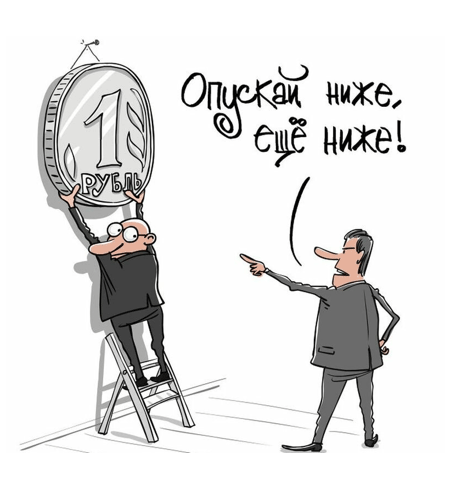Investment analysis. Discounting (Present Value, PV)
Regardless of the country and currency, money will always fall in price, and this is an objective process that is not associated with this or that economic management. Another thing is that there are additional factors - political, managerial, technical, etc., that affect inflation in each country in different ways. Now we are talking exclusively about the objective reasons for the depreciation of money, without taking into account artificial processes, manipulations by financial groups, central banks, etc.

The world's economy is a kind of organism that lives and develops according to objective laws; it “breathes” and grows since at least the 17th century, when the first paper bills appeared in Stockholm in 1661.
Within a decade, the European economy received an estimated equivalent. Let me remind you that until the 19th century, almost all paper money had or sought to have a gold or silver equivalent.
So, the main reason for the depreciation of money is the permanent growth of the world economy, which never stopped, even during wars. Of course, there are short-term cycles of decline, growth ... but now is not about that. So, in 1980, the world GDP was 11.147 trillion. dollars, and after 40 years it grew 8 times - up to 83.84 trillion. dollars (at the beginning of 2020). Relatively speaking, if in 1980 it was possible to buy a villa, a sports car and something else exotic for a million dollars, then in 2020 you can only buy a sports car ...
You are on the site of the developer of Budget-Plan Express - a software product for preparing business plans. This is the most affordable professional product in its class, and optimal for small businesses and studies (for students, MBI students, etc.) Details ...
Deducing of the formula of discounted money (Present Value, PV)
Discount is the determination of the value of future cash flows. Discount is the basis for calculating the cost of money taking into account the time factor.
To derive the discount formula, for starters, let us recall the calculation of annuities using the formula of complex rent. The same money, as you know, have different values over time. The use of interest in calculating the value of money is associated with the notion of financial rent, when the value of money depends on the percentage and duration of their use. For example, the cost of money (payments for a loan) in a year can be calculated as:
А1 = А + A × r = A (1 + r),
Where:А – Current value of money
А1 – The future (in a year) cost of money
r – annual percentage (coefficient)
Then, in two years, the value of money can be calculated by the formula:
А2 = A1 (1 + r) = А (1 + r) (1 + r) = A (1 + r)2,
Accordingly, for n years the formula takes the form:|
Аn = An-1 (1 + r)n = A(1 + r)(1 + r)...(1 + r)n-1 = A (1 + r)n, |
[1] |
Аmonth = A (1 + r)1/12 ≈ A (1 + r)0,083
Аquarter = A (1 + r)1/4 = A (1 + r)0,25
Аhalf-year = A (1 + r)1/2 = A (1 + r)0,5 … and so on
Discounted cash flows are calculated using the reverse of complex rents. To do this, output the number A from the formula [1] - the cost of future money:
A = An / (1 + r)n
And if we consider (instead of "А") a continuous discounted cash flow for n years (CFn, we can deduce from formula [1] the following formula – for total discounted cash flow (DCF):
DCF = ∑ CFn / (1 + r)n
Where:CFn – cash flow for n periods;
r – discount rate (for example, weighted average cost of capital, WACC can be used as the discount rate);
n – is the number of periods by which cash flows are calculated.
Now the coefficient r is the discount rate coefficient. In assessing the effectiveness of projects (business plans), the discount rate is a kind of risk level, beyond which investment indicators are calculated, sometimes called the discount rate barrier or "risk-free" rate. These concepts do not always coincide. Barrier rate, or the effective barrier rate is the interest rate that determines the minimum expected return on investment for a particular investor. If the expected return on investment is less than the barrier rate, the investment does not make sense.
To change the settings, see «General settings. Investment analysis».